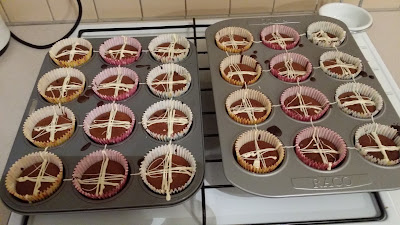A few weeks ago, I had the privilege of attending the 2017 Health
e Voices Australia Conference in Sydney. It was a fantastic experience – the
speakers and panellists were amazing, I met some fun and inspiring people, and the
conference in general had a very positive energy!
I would like to share with you my top takeaways from the
conference:
Sometimes it helps to have a bit of a sense
of humour about what you are going through.
This was something that came through from quite a few of the
speakers, and made me remember the saying that “laughter is the best medicine”
– it really is true! Sometimes a smile or a laugh can ease the awkwardness, and
make you feel a little better too.
For so many of us, it can be very awkward to talk about our
experiences (particularly with a bowel condition like mine!), and sometimes the
easiest way is to make a joke out of it. For example, our conference MC Shelly
Horton told a very funny story at the about a mishap that led to an oddly
shaped scar on her abdomen. Speaker Turia Pitt also had a funny and sarcastic
way of talking about her newfound “fame” since her ordeal – she doesn’t like
it, but she’s never had stage fright!
Q&A with Turia Pitt
Regardless of the condition or disease, we
all have similar challenges.
After talking with people advocating for a whole range of
conditions, including diabetes, mental illness, cancer and psoriasis, I
realised that even though we have different symptoms, we still have the same
sorts of challenges. This was particularly humbling, but also quite comforting.
I realised in these discussions that we all have to manage horrible
symptoms and treatments, often with multiple medications. We all have to deal
with awkwardness and cynicism. We all think about our identity following
diagnosis, and what labels we want to use (or not). As panellists Brittani
Nicholl and Luke Escombe discussed, we all have to juggle the different “compartments”
of our lives. We all deal with varied levels of anxiety. We all have to deal
with people not fully understanding the sometimes “invisible” nature of our
symptoms. We have all been told in one way or another that we “don’t look
sick.” And for those with chronic illnesses, we all want to find a cure.
Panel with Brittani Nicholl and Luke Escombe
It is incredibly important to always use
positive and supportive language.
When you are feeling fatigued or in pain, it can be very
easy to let yourself be negative or even depressed. To think that you deserve
this, or that you have somehow done it to yourself. Or to want to give up
fighting. It can also be tempting to compare yourself to others in a similar
situation, either to make yourself feel better or to justify how crappy you
feel. I’ve been in that kind of head space many times too.
However, this doesn’t help you, or others in your community.
So as hard as it is some days, we have to stay positive and support each other.
As many of the speakers and panellists at the conference said, we need to think
of ourselves as “surviving,” not “suffering.” Speaker Nick Bowditch suggested
that we think of our “flaws” or “defects” as our “gifts” or “superpowers”
instead, because they make us stronger and better in the long run. We also need
to use more positive words like “living with” rather than “battling.” And we
need to push ourselves and others upwards, not pull them down further into
those dark places.
We need to do more to recognise the mental
health components of our conditions.
Sometimes positive language and supporting each other isn’t
always enough however, which is where this point comes in. We often forget that
these conditions have mental or psychological components as well. Or we either
hide or brush it off, because is seen as a weakness.
In the larger health advocate and patient support community,
we need to work to change that perception. We all need to be able to
acknowledge that it is okay to feel anxious, depressed, stressed, or just generally
miserable – because having a chronic illness in particular just plain sucks! We
need to be able to take care of ourselves both physically and mentally. We need
doctors and other medical professionals to understand this side of it, and
direct us to others that can help. And we need to remember that just like
everything else, we are strong enough to handle it and work through it.
It is important to be authentic when sharing
our experiences.
As several of the speakers and panelists pointed out at the
conference, people will see through any fake information or lies, and it won’t
give them a good impression of you. So, in order to reach and help more people,
we as bloggers and advocates must be completely authentic. As part of this, we
also need to share our real experiences, even if it is messy (without going too
overboard of course). I would therefore like to use this as an opportunity to
pledge to always be authentic with my writing and posts, and will try to share
more and more of my experiences with all of you.
Photo credit: Janssen ANZ
On that note, please also refer to the below disclaimer from
Janssen ANZ for the 2017 Health e Voices Conference Australia.

















